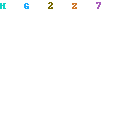When its time to clean-up around the house, some people have a hard time deciding what to keep and what to throw out. What they need is an incentive.How about collecting cash from stuff that was collectingdust?
You can do this by auctioning-off your unwanted or no longer needed items on eBay. eBay is the largest online market place of its kind. If you are considering this, then you need to gain some basic knowledge of the listing process.
Here is a 10-item checklist to go over before you begin selling:
1. Look at Other Seller Listings
Do a search for your item. See how other sellers list the same or similar item. Take mental note of the category, the title, the description, the photo and the pricing.
2. Choose the Most Appropriate Category
Make sure your item is in the most appropriate category. Avoid placing it in a category where it doesn't belong. List your item in the wrong category, and people looking for your item will not find it. Let eBay suggest the category for you, if you are unsure which category your item belongs.
3. Write an Accurate Title for Your Listing
Make it easy for buyers to find your item in a search by writing a precise title of it. Be as exact and detailed as
possible so your item can show up in broad keyword searches too. Avoid using hype words like "Best," "Great," or "Fantastic." Putting these words in the title will not help buyers find your item because they don't type in these types of words in their searches.
4. Set Your Price Low
Entice your buyers by starting at a low price. Set a reserve price in your listings so you don't have to sell it
when the auction ends at too low of a price for you to make a profit.
5. Give Plenty of Time for Your Auction
Let as many people as possible see your auction. Set the duration for five or seven days so weekend buyers will have a chance to bid on your item too.
6. Show a Photo of Your Item
Take a digital photo of your item and post it with your listing. Let your buyers see what they are bidding on.
Allow the photo to help you sell it. Having to see something first before you buy it is only natural. Apply
this same principle to online auctions. Buying a digital camera is a good investment these days and instructions on loading pictures up to the eBay site are simple enough that there really is no excuse not to have a picture.
7. Give Buyers Plenty of Payment Options
Make it easy for the buyer to pay. Providing as many payment options as available is better. Place in your item listing your own merchant account or credit card processor information. Sign up with Paypal if you don't have your own merchant account. Let buyers pay by check or money order if you don't provide payment through Paypal or credit cards. Including all payment options leaves no buyers behind.
8. Be Clear on Shipping and Handling Information
Avoid troubles or negative seller feedback by stating upfront your shipping costs. Mention this clearly in your
listing. Include your return policy.
9. Give Contact Information
Gain the buyer's trust by freely stating your contact information. List your email, phone number or mailing
address.
10. Keep on Testing
Review the auctions that have ended. Learn from the wins and losses. Try changing the category, title, description or price if it didn't sell. Testing the individual elements in the auction process is critical to your goal of becoming a successful auction seller.
Auction Seller Guide To Success
Search
Blog List
- 3 Way SMS
- Accounting Solution
- Affiliate Program
- Blogging For Money
- Borrowing Money Tips
- E-Commerce Business Ideas
- Effective Advertising Tips
- Email Marketing
- Free Internet Marketing Tools
- Investment For Beginners
- Learn Forex Trading For Free
- Make Money On Ebay
- Making Money With Google Adsense
- Real Estate Investment
- Register Your Domain
- The Car Care Tip
- The Car Care Tips
- Ways To Make Money Online

0 Comments Received
Leave A Reply